Exploration, a noble pursuit of discovery and knowledge, is not without its perils. The inherent dangers of venturing into unknown territories go beyond the physical realm, encompassing a spectrum of risks that challenge the very essence of human resilience and preparedness. As we embark on a journey to unravel the mysteries of uncharted domains, it becomes imperative to confront the multifaceted hazards that await those who dare to push the boundaries of exploration.
Key Takeaways
- Extreme weather and space radiation pose health risks, requiring advanced technology for protection.
- Terrain hazards and wildlife encounters increase danger, necessitating proper training and precautions.
- Exploration can disrupt habitats and transmit diseases, highlighting the need for protective measures.
- Equipment maintenance and communication are critical to avoid accidents and ensure timely rescue efforts.
Extreme Weather Conditions
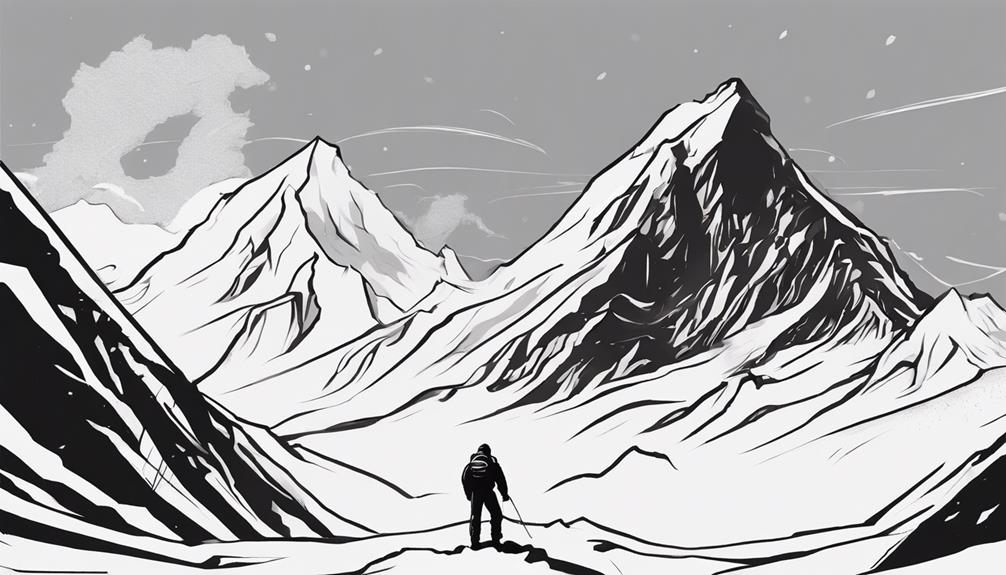
Exploration in extreme weather conditions necessitates meticulous preparation and understanding of the local climate to safeguard against life-threatening risks. When venturing into environments with harsh weather conditions, explorers face various challenges, including the potential impact of space radiation. Space radiation poses a significant threat to explorers, especially in outer space or on other planets with minimal atmosphere or magnetic shielding.
The exposure to space radiation can lead to serious health issues such as an increased risk of cancer, radiation sickness, and DNA damage. Therefore, when planning expeditions to locations with extreme weather conditions, it is crucial to consider the effects of space radiation on the human body and implement appropriate safety measures.
Explorers must utilize advanced technology and protective gear to shield themselves from harmful space radiation during their missions. Understanding the risks associated with space radiation in extreme weather conditions is paramount to ensuring the safety and well-being of individuals embarking on exploratory journeys.
Terrain Hazards
Terrain hazards present significant risks during exploration, with steep cliffs posing dangers of falls and unstable ground increasing the likelihood of accidents. Navigating treacherous terrains requires caution to avoid injuries and potential loss of direction. Proper training and equipment are crucial in safeguarding against the perils of terrain hazards in remote and challenging environments.
Steep Cliffs Risks
Navigating near steep cliffs presents a multitude of risks, including the potential for falls, injuries, and other hazards that can be exacerbated by challenging terrain conditions. In the realm of human spaceflight, these dangers are magnified due to the need for astronauts to explore unfamiliar extraterrestrial landscapes. Loose rocks and unstable footing near steep cliffs can lead to accidents or fatalities if proper precautions are not taken. Additionally, limited visibility and extreme weather conditions further heighten the risks associated with traversing these terrains. Astronauts must exercise caution and adhere to strict safety protocols when navigating near steep cliffs to mitigate the dangers posed by these treacherous environments.
Unstable Ground Perils
Given the inherent risks associated with steep cliffs, understanding and addressing unstable ground perils, such as landslides, rockfalls, and sinkholes, is paramount in ensuring the safety of explorers during missions in challenging terrains. Human safety is at stake when navigating areas prone to these hazards, as they can lead to entrapment, injuries, or even fatalities. Proper assessment of terrain conditions is crucial to prevent accidents caused by sudden collapses or unstable footing. The table below highlights the dangers explorers face from unstable ground perils:
| Terrain Hazard | Description | Risk to Explorers |
|---|---|---|
| Landslides | Rapid downhill movement of rocks, soil, and debris | Trapping or burying explorers |
| Rockfalls | Sudden falling of rocks from cliffs or steep slopes | Injury or blocking escape routes |
| Sinkholes | Sudden collapses in the ground forming deep holes | Entrapment or injuries due to unstable ground |
Wildlife Encounters
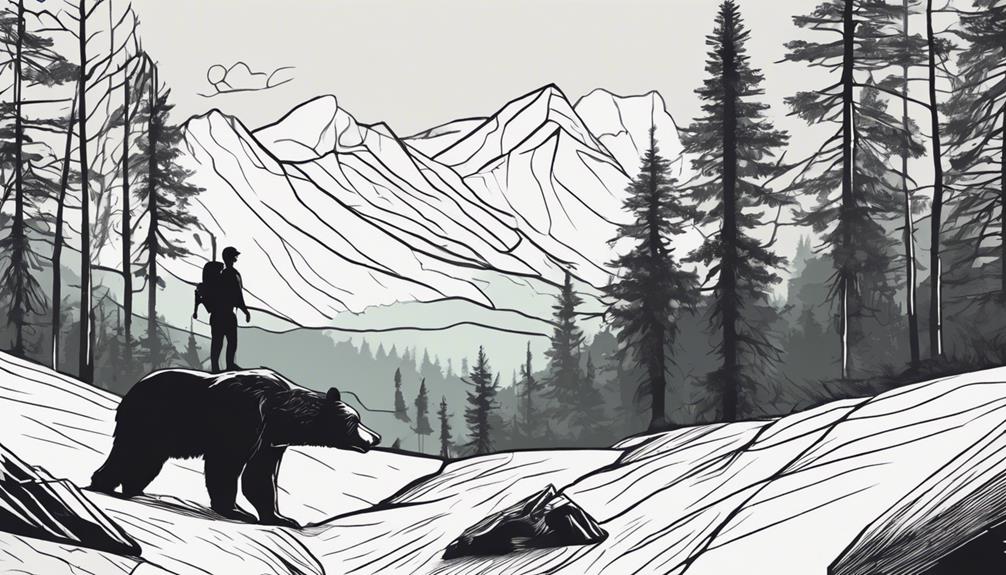
Encounters with dangerous wildlife pose significant risks to explorers, with potential for injuries or fatalities due to animal attacks. Additionally, disturbance to natural habitats during exploration can have far-reaching impacts on ecosystems and the species within them. Moreover, the potential transmission of diseases from wildlife to humans adds another layer of risk to these encounters.
Animal Attacks Risk
Amidst the perils of exploration, the threat of animal attacks looms large, presenting a formidable risk during encounters with wildlife. Predators such as bears, big cats, or snakes can pose a significant danger to explorers, potentially leading to injuries or fatalities. It is essential for individuals venturing into the wilderness to take precautions like carrying bear spray, making noise in bear country, and being familiar with snake avoidance techniques to mitigate the risks of animal attacks. Understanding animal behavior and respecting their space are crucial aspects to avoid dangerous encounters during exploration. Moreover, in remote areas where immediate medical assistance may be lacking, the consequences of animal attacks can be further exacerbated, underscoring the importance of preparation and vigilance in the face of wildlife encounters.
Habitat Disturbance Impact
Exploration activities can have profound and lasting impacts on wildlife habitats, disrupting ecosystems and threatening the delicate balance of natural environments. Encounters between explorers and wildlife can lead to habitat disturbance, affecting the availability of resources essential for the survival of various species. The introduction of invasive species by explorers can disrupt the existing food chains and ecological relationships, jeopardizing the life support systems of native plants and animals. Furthermore, human presence in remote areas can cause stress and danger for wildlife, potentially leading to behavioral changes and population declines. Wildlife displacement, whether temporary or permanent, due to exploration activities can result in the loss of biodiversity and further ecological disruption, highlighting the importance of minimizing habitat disturbance during exploration endeavors.
Disease Transmission Potential
With the potential for serious infections and illnesses, disease transmission from wildlife encounters during exploration poses a significant risk that necessitates careful precautions and awareness. Wildlife species can carry zoonotic diseases that have the potential to be transmitted to the human body during expeditions. In remote areas where medical facilities are scarce, the risks of disease transmission are heightened. To prevent the spread of diseases, explorers must take essential precautions such as getting relevant vaccinations, wearing protective clothing, and avoiding direct contact with wild animals. Understanding the local wildlife and the diseases they carry is crucial for minimizing the dangers associated with exploration. By being vigilant and well-prepared, explorers can significantly reduce the risks of disease transmission during their expeditions.
Equipment Malfunction
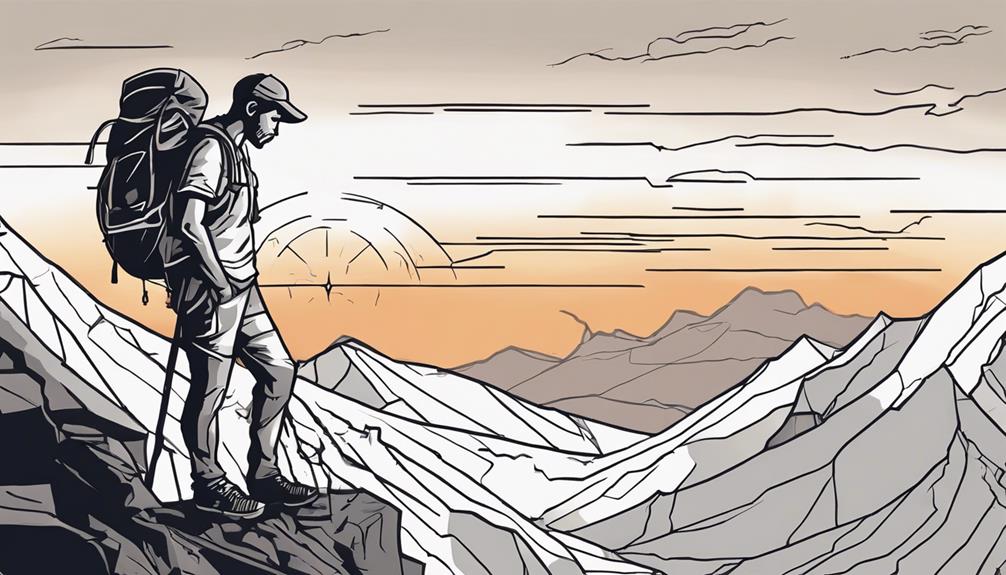
Equipment malfunctions pose a significant threat to the safety and success of exploration missions, increasing the likelihood of accidents and jeopardizing the well-being of explorers. When essential equipment fails to function properly, the consequences can be dire:
- Malfunctioning Navigation Tools: Navigation tools are crucial for keeping explorers on course. If these tools malfunction, explorers risk getting lost, leading to safety concerns and hindering overall progress.
- Communication Device Failures: In cases of emergency, communication devices play a vital role in coordinating rescue efforts. Failures in these devices can impede timely assistance, putting explorers at greater risk.
- Inadequate Gear or Faulty Equipment: The use of inadequate gear or faulty equipment raises the chances of accidents and injuries during exploration missions, compromising the safety and well-being of the explorers.
- Lack of Proper Maintenance: Failure to maintain equipment properly can result in critical breakdowns at crucial moments, jeopardizing the success of the expedition and potentially putting lives in danger.
Communication Breakdown
Amidst the challenges of exploration, the breakdown of communication stands as a critical obstacle to the safety and success of expeditions. In remote and harsh environments, where explorers are often isolated and confined, effective communication is essential for ensuring the well-being of the team. Communication breakdowns can severely hinder rescue efforts, putting lives at risk. Malfunctioning communication devices not only lead to delays in receiving crucial help but also contribute to misunderstandings and confusion among team members, potentially escalating into dangerous situations. When explorers are left without the ability to call for help due to communication failures, they become vulnerable to the harsh elements and other risks present in their environment. Addressing communication breakdowns through reliable systems and protocols is paramount for the safety and coordination of exploration teams.
| Communication Breakdown | |
|---|---|
| Hinders rescue efforts | Misunderstandings |
| Delays in receiving help | Confusion |
| Isolation of explorers | Vulnerability |
| Lack of coordination | Dangerous situations |
| Risk to team safety |
Navigation Challenges
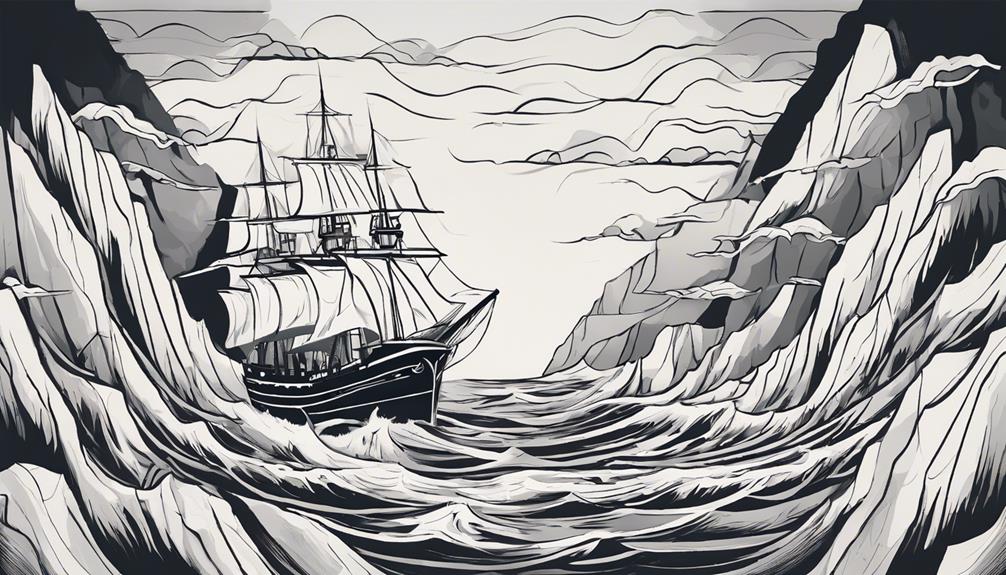
Navigation challenges in exploration present significant risks, such as the potential for map errors leading to confusion and danger in treacherous terrains. These challenges can result in lost time, resources, and even lives if not carefully managed and navigated. It is crucial for explorers to be vigilant, well-prepared, and equipped with reliable tools to mitigate the hazards posed by navigation difficulties.
Map Errors
Map errors present a significant risk to explorers, as they can lead to miscalculations in distances and potentially result in delays or being stranded in unfamiliar territories. When navigating long distances, the following issues may arise due to map errors:
- Misjudging Distances: Incorrect map data can lead explorers to underestimate or overestimate the actual distances, causing delays in reaching their destination.
- Navigation Errors: Outdated maps may not accurately reflect new obstacles or changes in the landscape, increasing the likelihood of getting lost in unfamiliar or hazardous terrain.
- Unsafe Pathways: Inaccurate mapping information can result in explorers choosing unsafe paths or encountering unexpected hazards along the way.
- Limited Cross-Referencing: Relying solely on maps without cross-referencing other sources can heighten the chances of encountering navigation challenges.
Treacherous Terrain
Given the inherent risks associated with inaccurate map data, explorers must navigate treacherous terrains with utmost caution to mitigate the challenges posed by natural obstacles and hazardous conditions. Treacherous terrains, such as those found near a space station, present a myriad of obstacles like steep cliffs, dense forests, and slippery slopes that make navigation a daunting task. Hazards like avalanches, rockfalls, and sudden weather changes further compound the risks explorers face in such environments. Navigating through these terrains demands a thorough understanding of topography, proper mapping techniques, and the utilization of advanced GPS technology to ensure safe passage. Successful traversal of treacherous terrains near a space station necessitates meticulous planning, continuous risk assessment, and the adoption of specialized gear to safeguard the well-being of explorers.
Health Risks
Exposure to space radiation and prolonged periods of isolation in space present significant health risks to astronauts, encompassing the potential development of cancer, cardiovascular complications, cognitive impairments, and psychological challenges.
Health Risks for Astronauts:
- Cancer Risk: Space radiation, including galactic cosmic rays and solar particle events, increases astronauts' susceptibility to various forms of cancer due to DNA damage.
- Cardiovascular Complications: Prolonged exposure to space radiation can lead to a higher risk of cardiovascular diseases, such as atherosclerosis and heart tissue damage.
- Cognitive Impairments: Space radiation exposure has been linked to cognitive deficits, affecting memory, concentration, and decision-making abilities among astronauts.
- Psychological Challenges: The isolation and confinement experienced in space missions can result in psychological issues like depression, anxiety, and interpersonal conflicts, impacting the mental well-being of astronauts.
These health risks underscore the importance of developing effective countermeasures and monitoring systems to safeguard the physical and mental health of astronauts during extended space missions.
Psychological Effects
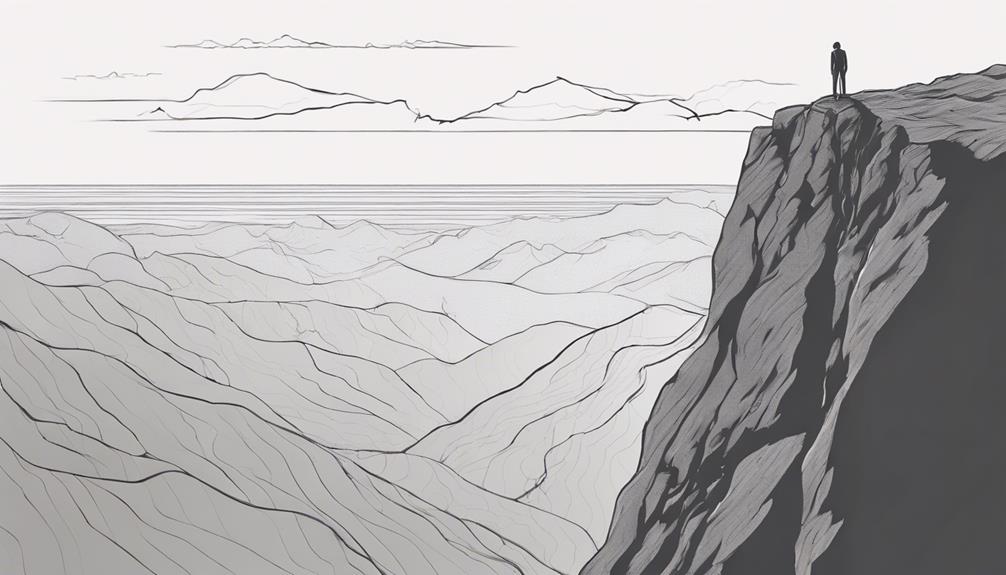
Navigating the intricate web of psychological effects that accompany exploration requires a keen understanding of human resilience and vulnerability in challenging environments. Isolation and loneliness in remote areas can severely impact mental health during exploration. The absence of familiar support systems can exacerbate feelings of solitude, leading to increased stress and anxiety. Dealing with the fear of the unknown and uncertainty in high-pressure situations further compounds these psychological challenges. Coping mechanisms may be put to the test as individuals navigate overwhelming cultural differences and language barriers in new environments, adding an extra layer of psychological strain.
Moreover, witnessing accidents or deaths during exploration can have lasting psychological effects on individuals, potentially leading to conditions such as post-traumatic stress disorder. These psychological hazards highlight the importance of comprehensive mental health support and strategies for explorers to mitigate the risks associated with the psychological toll of their endeavors.
Resource Depletion
Exploration missions face a critical challenge in resource depletion, which encompasses the exhaustion of vital supplies such as food, water, fuel, and equipment, posing significant risks to the safety and success of explorers in remote or harsh environments.
Key Points on Resource Depletion in Exploration:
- Survival Challenges: Running out of essential resources during exploration can lead to survival challenges, endangering the well-being of explorers.
- Hindrance to Progress: Depletion of resources hinders the progress of exploration missions, limiting the ability to achieve set objectives.
- Safety Risks: The limited availability of crucial resources in remote or harsh environments increases the overall risks faced by explorers during their missions.
- Importance of Proper Management: Proper resource management and conservation techniques are vital to prevent depletion, ensuring the safety and success of exploration endeavors.
Inadequate planning for resource needs can result in critical shortages and potential emergencies during exploration missions, emphasizing the necessity for meticulous preparation and resource allocation strategies to mitigate exploration hazards.
Legal and Ethical Concerns
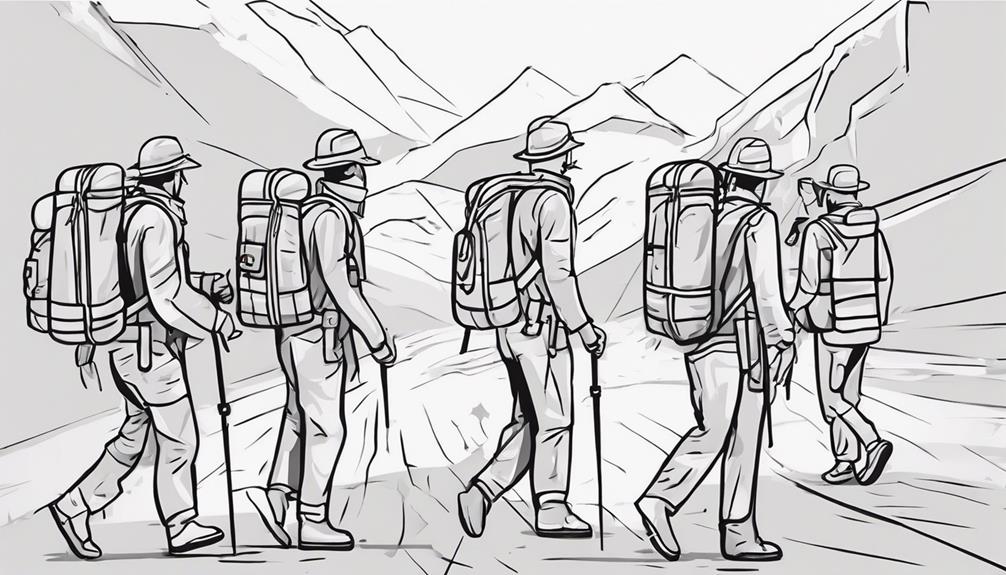
Legal and ethical considerations play a pivotal role in guiding the conduct of exploration missions, ensuring adherence to local laws, customs, and ethical standards to mitigate potential conflicts and uphold integrity. When exploring new frontiers like the Red Planet, Mars, explorers must navigate complex legal and ethical landscapes. Here is a table illustrating some of the key legal and ethical concerns in exploration:
| Legal Concerns | Ethical Concerns | Collaborative Solutions |
|---|---|---|
| Respect for local laws | Balancing knowledge | Collaboration with local |
| Ownership and access rights | and preservation of | authorities and indigenous |
| Territorial boundaries | cultural heritage | groups |
| Human rights considerations | Environmental conservation | Avoiding exploitation |
| Avoiding illicit activities | and illicit involvement |
Explorers must be mindful of these considerations to ensure that their exploration activities on the Red Planet are conducted responsibly and ethically, respecting both the environment and any potential indigenous communities that may exist.
Frequently Asked Questions
What Were the Dangers of Exploration?
Exploration hazards encompass a myriad of risks that individuals face when venturing into unknown territories. These dangers include extreme weather conditions leading to hypothermia or heatstroke, encounters with dangerous wildlife resulting in injuries or fatalities, risks of falls or getting lost in treacherous terrains, dehydration and malnutrition due to lack of resources, and exposure to life-threatening infectious diseases in remote areas. Understanding these perils is crucial for ensuring the safety of explorers.
What Are the Cons of Exploration?
Exploration, despite its allure, harbors numerous risks. These hazards encompass physical dangers like extreme weather and treacherous terrains, psychological challenges from isolation and cultural differences, equipment failures leading to lost rescue opportunities, environmental perils from natural disasters and toxic exposure, and sociopolitical risks involving conflicts and legal entanglements. Understanding and mitigating these exploration risks are imperative to ensure the safety and success of expeditions.
What Were the Cons of the European Exploration?
Exploration Consequences encompass a range of negative impacts resulting from European exploration. These include the spread of diseases, exploitation of resources, cultural destruction, violence, and societal disruptions. The consequences extend beyond immediate casualties to long-term effects on indigenous populations, such as economic devastation and loss of cultural identity. European exploration's adverse outcomes persist as a reminder of the dangers inherent in the pursuit of new territories and resources.
What Does Exploration Lead To?
Exploration consequences encompass a wide array of outcomes, including the discovery of new species, ecosystems, and geological formations, fostering scientific research and advancements in various fields. It aids in understanding and preserving cultural heritage sites, promoting environmental conservation, and inspiring innovation and technological developments. Exploration ultimately leads to a deeper understanding of our world, driving progress in knowledge, technology, and sustainability.
Conclusion
In conclusion, the dangers of exploration encompass a wide range of physical, psychological, and environmental risks. One striking statistic is that over 1,000 explorers have lost their lives in the pursuit of discovery in the last century alone. This highlights the inherent dangers that explorers face and underscores the importance of careful planning, preparation, and risk mitigation strategies in ensuring the safety and success of exploration missions.
